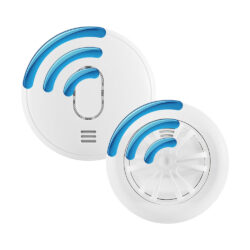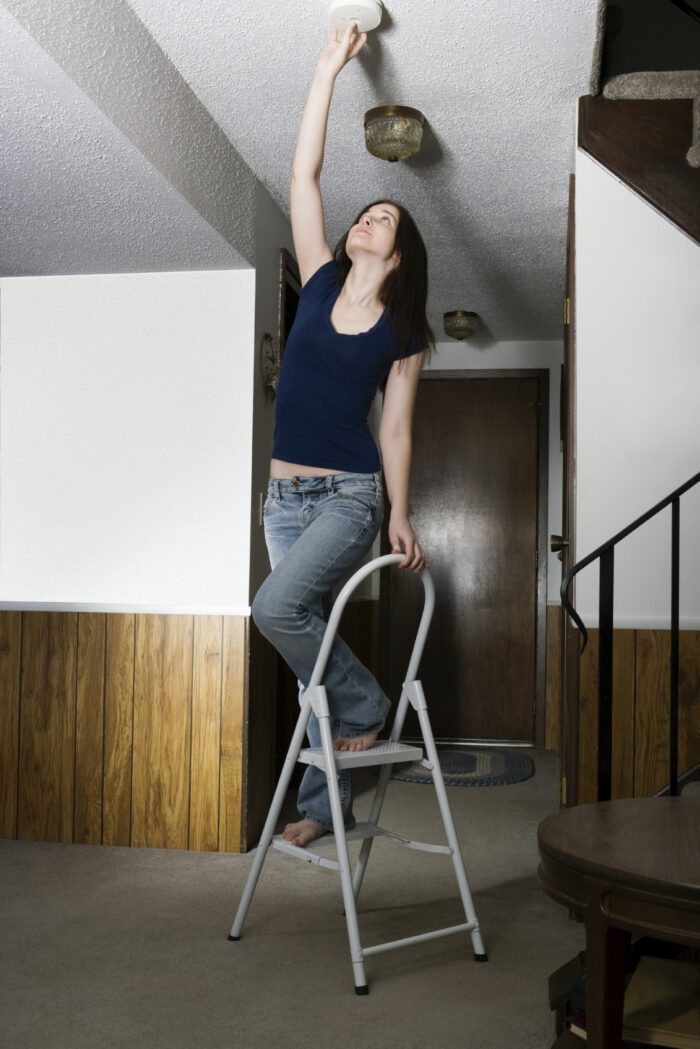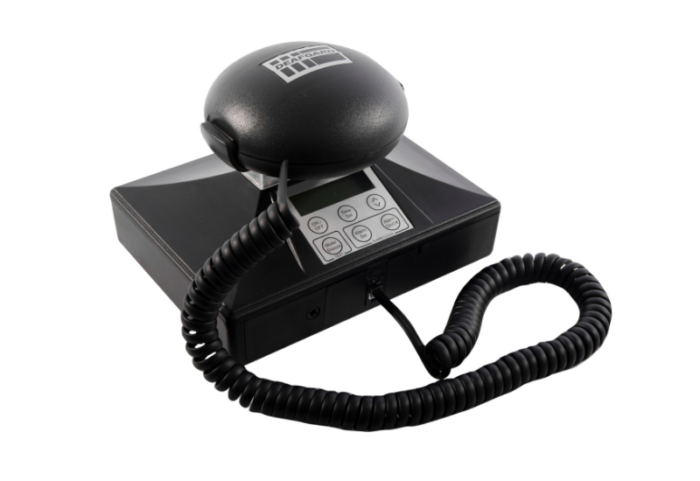Wake Up Get a Smoke Alarm
Research shows that your chances of getting injured or dying in a house fire reduce when you get an early warning about the danger. A working smoke alarm can give you those precious few minutes of warning, which could help you and your family to get out safely. Buying and fitting a smoke alarm could help save your family’s life.
This section describes what smoke alarms are and explains how many you need, where you should fit them and how to look after them. Follow the manufacturer’s instructions on how to install and position the alarm. If you have difficulties or want more information, you should contact your local Fire and Rescue Service (FRS). The local FRS may be able to make arrangements to have the alarm fitted for you if you can’t do it for yourself. The instructions will also give you guidance on battery replacement and maintenance.
What is a smoke alarm?
Smoke alarms, or smoke detectors as they are sometimes known, are small devices about the size of a hand and are cheap and easy to install. They are fitted to the ceiling and can detect fires in their earliest stages by sounding a loud warning alarm. This alarm can give you those precious few minutes of warning time to get you and your family out safely.
How should you choose a smoke alarm?
There are many types of alarms on the market. They cost around £5.00 upwards powered by a battery (Dry Cell) or mains power, which can be with or without a backup battery. We recommend, however, that you always choose mains-powered smoke alarms with backup batteries. Where you require more than one detector, they can be linked together using hard wiring or a radio-interlinked network.
Always look for an alarm which carries the British Standard kitemark, as this means that the alarm has achieved a standard acceptable to the British Standards Institution (BSI). Also, ensure that the alarms still have the full ten-year product life that is the standard for smoke alarms and has not been kept in a warehouse for too long. Some Amazon and eBay sellers sell old stock that other retailers sold off at bargain prices.
Smoke alarms use various methods of detection and it is important to select the most appropriate for your needs.
The most popular smoke alarm models are:
1) Ionisation smoke alarms: The oldest type of smoke alarm and still the standard in the UK. The ionisation smoke alarm contains a small amount of radioactivity to operate. Ionisation smoke alarms are now being phased out and it is recommended that you replace your old ionisation smoke alarms with an optical smoke alarm.
2) Optical smoke alarms (also called photoelectric): These detect fire with a small light beam within a chamber (there is no radioactivity in optical alarms). Optical alarms are best suited for rooms with soft furnishings such as bedrooms, lounges and halls. This type of smoke alarm is less likely to give false alarms from burnt toast when installed near a kitchen.
3) Heat alarms: These alarms detect excessive temperatures in a kitchen or garage. Some heat detectors also detect an unusual speed of temperature rise. These alarms are the answer to false alarms in your kitchen or garage. They are not suitable for the hall or the rest of the house!
4) Combination smoke and CO (carbon monoxide) alarms: These alarms detect both smoke and carbon monoxide saving you space and costs. They give different alarm signals to differentiate the two causes of an alarm.

Combined Smoke and Carbon Monoxide Alarm
If you require more information about the different smoke alarm sensor types, you can find it on the Safelincs site.
Information about the Code of Practice for the design, installation and maintenance of fire detection and fire alarm systems in dwellings is BS 5839-6:2019 (which has recently replaced BS 5839-6:2013) and should be available at your local reference library.
Fitting your smoke alarm
If you live in a flat or bungalow, one smoke alarm is the minimum cover required to provide you with an early warning in case of a fire. If your home has more than one storey, fit smoke alarms on every level of your home. For extra protection, you can fit alarms in all rooms where you think a fire may start, for example, the lounge or bedroom. Do not fit a smoke alarm in the bathroom, as the steam may trigger the alarm. Cigarette smoke will not usually set off an alarm. In some cases, you may be able to link more than one alarm together, so if one alarm senses smoke, it will all sound an alarm. There are radio-interlinked smoke alarms available to make this type of installation easier.
Where should you fit your smoke alarm?
Smoke alarms are simply screwed onto the ceiling (or stuck to it with double-sided pads) and should be fitted as close to the centre of the hall or room as possible, but at least 30 centimetres (12 inches) away from any wall or light fitting. In escape routes, there should be a detector within 1.5 metres of the entrance to all habitable rooms and any cupboards that pose a fire risk. In some situations, this may require additional smoke alarms. You should always ensure that your alarm is fitted in a place where it can be heard throughout your home – particularly when you are asleep. If your home is on one level, you should fit the alarm in the hallway between the living and sleeping areas. If your home has more than one storey, the best place to fit it is in the hallway close to the bottom of the staircase, and a second alarm on the upstairs landing.
Looking after your smoke alarm
Smoke alarms need very little maintenance. A few minutes of your time each year will ensure that your alarms are working and could help save lives. Regular routine testing and maintenance are very important. All smoke alarm systems should be tested at least monthly using the integral test button. You should also test your smoke alarms if you have been away for a long period of time and if the power has failed. Smoke alarms should be cleaned periodically in accordance with manufacturer recommendations. Where experience shows that excessive levels of dust are compromising the effectiveness of the system, more frequent cleaning and servicing may be required.

Change the battery in the alarm when you hear the low-level battery warning signal, which could be one to ten years. Make a note of the date of the change. Vacuum the inside of the alarm to ensure that dust isn’t blocking the sensor chamber; the frequency will depend on how dusty the location is. The life of a detector is about ten years. After ten years the smoke alarm needs to be replaced.
There is a free reminder service where you can request regular SMS messages or emails to remind you to change your smoke alarm battery or carry out your tests.
Smoke alarms for people with hearing impairment
Many people whose hearing is not severely impaired can still hear a conventional smoke alarm. Linking two or more alarms will give peace of mind that the sound of the alarm will be heard in different parts of the home, no matter where the fire has been detected. This way smoke detected in the living room will set off another alarm in the bedroom. An electrician will be able to advise you about linking the alarms or you can install radio-interlinked units. For people who would not be able to hear a conventional smoke alarm, there are special devices available to ensure the deaf and the hard of hearing are alerted to a fire. Some specialist alarms use a vibrating pad or flashing light instead of the auditory signal – the vibrating pad alarms are particularly useful for deaf-blind people.

Further information is available from the Royal National Institute for Deaf People. You may also find it useful to contact local voluntary organisations or the Social Services Department may be able to offer advice and assistance on products specially designed to help people with disabilities.
Further Information
For further information, help and advice go to your local council or fire brigade, who will be happy to advise you on fire prevention and safety. Your local Age UK office (previously known as Age Concern) or Citizens Advice Bureau can give advice on what local voluntary groups there may be which can help you, and what benefits may be due to you.
Useful Tips
- Never disconnect, or take the batteries out of your alarm if it goes off by mistake.
- Standard battery-operated alarms are the cheapest option, but the batteries need to be replaced regularly.
- Purchase alarms with longer-life batteries to avoid forgetting to replace your batteries yearly.
- An alarm with ten-year sealed-in batteries is the best option, no need to remember to change the batteries for the whole life-span of the alarm.
- If you want to install mains-powered alarms, only choose mains-powered smoke alarms with an internal backup battery. Look out for alarms with rechargeable lithium backup batteries that will last the full ten years of the smoke alarm’s life.
- Be mindful of alarms that plug into a light socket. They use a rechargeable battery, which is only charged when the light is on. This type of alarm overheats due to the heat from the lightbulb, which damages the battery. Also, some models cannot be silenced at the end of their ten-year life, which can cause problems.
- Installing interlinked alarms so that when one alarm detects a fire, they all go off together is useful if you live in a large house or over several levels.
- Don’t put ionisation smoke alarms in or near kitchens or bathrooms where smoke or steam can set them off by accident. For the kitchen use a heat alarm and, in the hallway, use an optical smoke alarm. Bathrooms sadly cannot be covered with smoke alarms at all.
- Contact your local Fire and Rescue Service for help if you can’t install your smoke alarms or need advice on which alarms to install.
- Make checking your smoke alarm part of your regular household routine. Test it by pressing the button until the alarm sounds. If it doesn’t go off, check if you need to replace the battery or if a fault has developed.
- If your smoke alarm starts to beep on a regular basis, you need to replace the battery immediately.
- If you have a ten-year alarm, you will need to replace the whole alarm every ten years.
Categories:Fire Safety at Home Fire Safety Guides
April 1, 2011[Last updated: October 17, 2023]
Comments are closed here.